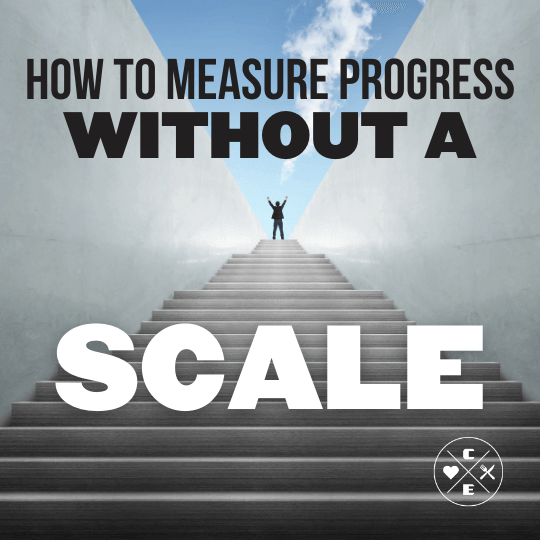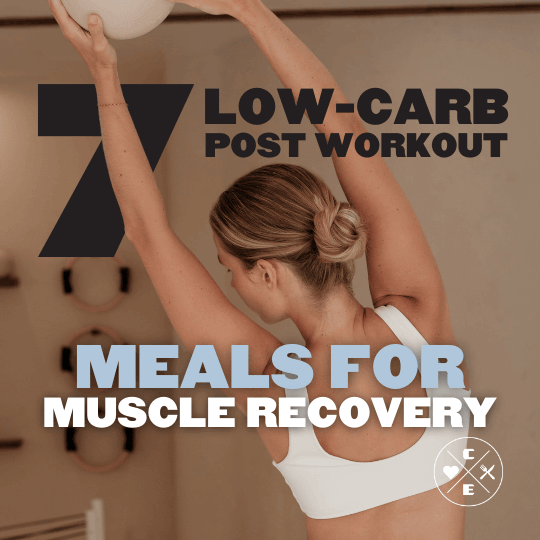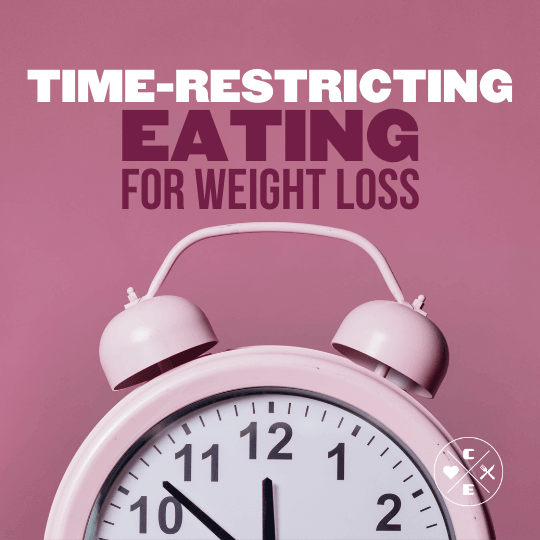Related video from YouTube
New here? Set targets with our calorie-goal guide, build meals from protein + produce, compare portion control vs. calorie counting, and use our meal-prep playbook. Walking more? See walking for weight loss.
Why measure without a scale?
- Body recomposition happens: Clothes can fit better as you lose inches—even if weight stalls.
- Belly fat is the bigger risk: Changes at the waist often matter more than small changes on the scale.
- Motivation: Frequent non-scale wins (belt notches, faster walk times, better sleep) keep you consistent.
How to measure your waist (step by step)
Use a flexible, non-stretch tape. Measure at the same time of day (morning is best), standing relaxed at the end of a normal exhale.
- Stand tall; find the top of your hip bones (right iliac crest).
- Wrap the tape horizontally at that level around your abdomen; keep it snug but not compressing skin.
- Measure after a normal breath out; record to the nearest 0.1 in/cm. Take 2 readings; if they differ, average them.
How often: once per week. Bonus: Calculate waist-to-height ratio (WHtR = waist/height); a common target is <0.5 for adults. See references for method & rationale.
Other tape measurements
Measure every 2–4 weeks, same time of day.
- Hips: around the fullest part of your buttocks.
- Thigh: mid-thigh (halfway between hip crease and top of kneecap).
- Upper arm: midpoint between shoulder tip and elbow.
- Chest: at nipple line (men) / fullest bust (women), tape parallel to floor.
Progress photos that actually help
- Angles: front, side, back; neutral lighting; same clothing; plain background.
- Frequency: every 2–4 weeks.
- Consistency: same time of day (morning), before meals/workouts.
Simple fitness checks (repeatable)
- 6-Minute Walk Test (home version): mark a flat 30–50 m path; walk back-and-forth for 6 minutes; record distance. Re-test monthly—more distance = better endurance.
- Plank hold: elbows under shoulders, neutral spine; total hold time. Re-test every 2 weeks.
- Wall-sit (isometric): knees/hips ~90°; hold time to technical limit. Re-test every 2 weeks.
- Push-ups (quality reps): as many consecutive standard-form reps as you can. Re-test every 4 weeks.
Training ideas: try our isometric routine and avoid common lifting mistakes.
Your non-scale wins dashboard
- Weekly: waist (and WHtR), belt notch/clothing fit; energy (1–10); sleep quality (1–10); steps/activity minutes; protein target hit?
- Biweekly: plank, wall-sit, push-ups; progress photos.
- Monthly: 6-minute walk distance; optional body-comp scan (see notes below).
Health markers to watch (with your clinician)
- Blood pressure
- Lipids (LDL-C, HDL-C, triglycerides)
- Glucose/A1C if at risk
Body-comp notes: DEXA is a clinical standard for fat vs. lean mass, but availability/cost vary. At-home BIA scales are very hydration-sensitive; use them at the same time of day and track the trend rather than any single reading.
Want a simple nutrition framework to support these wins? Start with what to eat for weight loss and, if helpful, protein shakes as convenient anchors.
FAQs
Is waist size a better signal than daily weight?
For many people, yes—waist change reflects shifts in abdominal fat. Use a proper method (iliac-crest level, after a normal exhale) and track weekly.
What’s a good waist-to-height ratio?
Common public-health guidance uses <0.5 as a simple boundary for lower early cardiometabolic risk in adults.
How often should I re-test fitness?
Every 2–4 weeks for plank/wall-sit/push-ups; monthly for the 6-minute walk. Use the same route/conditions each time.
References
New here? Set targets with our calorie-goal guide, build meals from protein + produce, compare portion control vs. calorie counting, and use our meal-prep playbook. Walking more? See walking for weight loss.
Why measure without a scale?
- Body recomposition happens: Clothes can fit better as you lose inches—even if weight stalls.
- Belly fat is the bigger risk: Changes at the waist often matter more than small changes on the scale.
- Motivation: Frequent non-scale wins (belt notches, faster walk times, better sleep) keep you consistent.
How to measure your waist (step by step)
Use a flexible, non-stretch tape. Measure at the same time of day (morning is best), standing relaxed at the end of a normal exhale.
- Stand tall; find the top of your hip bones (right iliac crest).
- Wrap the tape horizontally at that level around your abdomen; keep it snug but not compressing skin.
- Measure after a normal breath out; record to the nearest 0.1 in/cm. Take 2 readings; if they differ, average them.
How often: once per week. Bonus: Calculate waist-to-height ratio (WHtR = waist/height); a common target is <0.5 for adults. See references for method & rationale.
Other tape measurements
Measure every 2–4 weeks, same time of day.
- Hips: around the fullest part of your buttocks.
- Thigh: mid-thigh (halfway between hip crease and top of kneecap).
- Upper arm: midpoint between shoulder tip and elbow.
- Chest: at nipple line (men) / fullest bust (women), tape parallel to floor.
Progress photos that actually help
- Angles: front, side, back; neutral lighting; same clothing; plain background.
- Frequency: every 2–4 weeks.
- Consistency: same time of day (morning), before meals/workouts.
Simple fitness checks (repeatable)
- 6-Minute Walk Test (home version): mark a flat 30–50 m path; walk back-and-forth for 6 minutes; record distance. Re-test monthly—more distance = better endurance.
- Plank hold: elbows under shoulders, neutral spine; total hold time. Re-test every 2 weeks.
- Wall-sit (isometric): knees/hips ~90°; hold time to technical limit. Re-test every 2 weeks.
- Push-ups (quality reps): as many consecutive standard-form reps as you can. Re-test every 4 weeks.
Training ideas: try our isometric routine and avoid common lifting mistakes.
Your non-scale wins dashboard
- Weekly: waist (and WHtR), belt notch/clothing fit; energy (1–10); sleep quality (1–10); steps/activity minutes; protein target hit?
- Biweekly: plank, wall-sit, push-ups; progress photos.
- Monthly: 6-minute walk distance; optional body-comp scan (see notes below).
Health markers to watch (with your clinician)
- Blood pressure
- Lipids (LDL-C, HDL-C, triglycerides)
- Glucose/A1C if at risk
Body-comp notes: DEXA is a clinical standard for fat vs. lean mass, but availability/cost vary. At-home BIA scales are very hydration-sensitive; use them at the same time of day and track the trend rather than any single reading.
Want a simple nutrition framework to support these wins? Start with what to eat for weight loss and, if helpful, protein shakes as convenient anchors.
FAQs
Is waist size a better signal than daily weight?
For many people, yes—waist change reflects shifts in abdominal fat. Use a proper method (iliac-crest level, after a normal exhale) and track weekly.
What’s a good waist-to-height ratio?
Common public-health guidance uses <0.5 as a simple boundary for lower early cardiometabolic risk in adults.
How often should I re-test fitness?
Every 2–4 weeks for plank/wall-sit/push-ups; monthly for the 6-minute walk. Use the same route/conditions each time.
References
- CDC/NCHS — How to measure waist at the iliac crest (NHANES methodology). cdc.gov (PDF) · NHANES manual
- Waist-to-Height Ratio (WHtR) review — simple boundary value 0.5 for early risk. Ashwell 2016 (open access)
- 6-Minute Walk Test — standardized guideline. ATS statement (PDF) · StatPearls overview
- Push-up field test protocol. ACE protocol (PDF)
- DEXA for body composition (overview & limitations). Shepherd 2017 · Messina 2020
- BIA and hydration sensitivity. Uğraş 2020 · Dehghan 2008 review
Educational content only; not medical advice.
- CDC/NCHS — How to measure waist at the iliac crest (NHANES methodology). cdc.gov (PDF) · NHANES manual
- Waist-to-Height Ratio (WHtR) review — simple boundary value 0.5 for early risk. Ashwell 2016 (open access)
- 6-Minute Walk Test — standardized guideline. ATS statement (PDF) · StatPearls overview
- Push-up field test protocol. ACE protocol (PDF)
- DEXA for body composition (overview & limitations). Shepherd 2017 · Messina 2020
- BIA and hydration sensitivity. Uğraş 2020 · Dehghan 2008 review
Educational content only; not medical advice.




